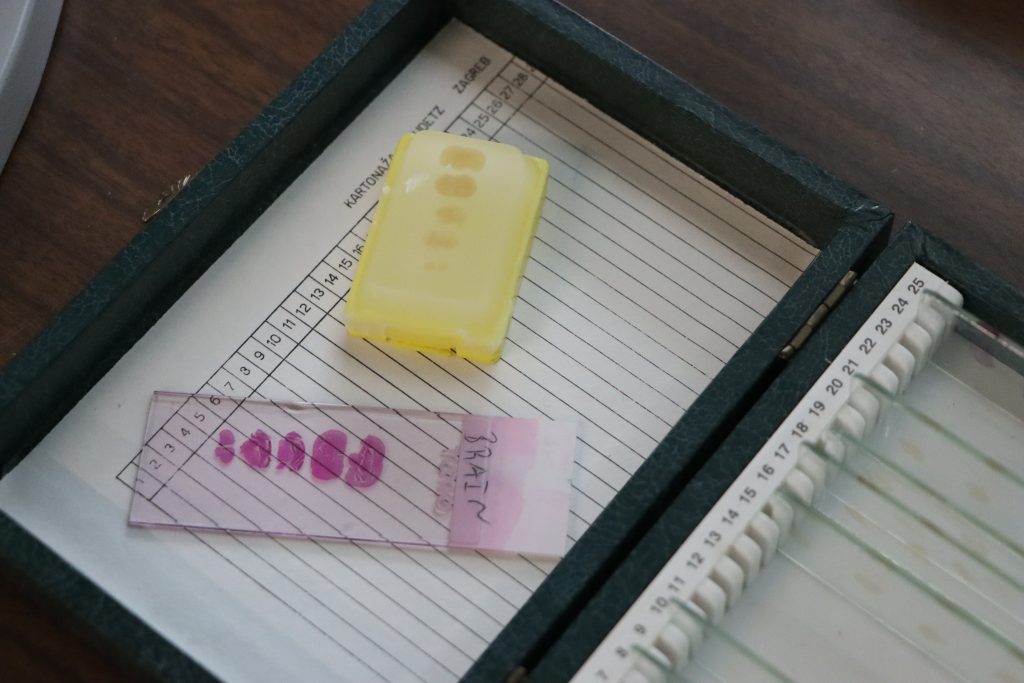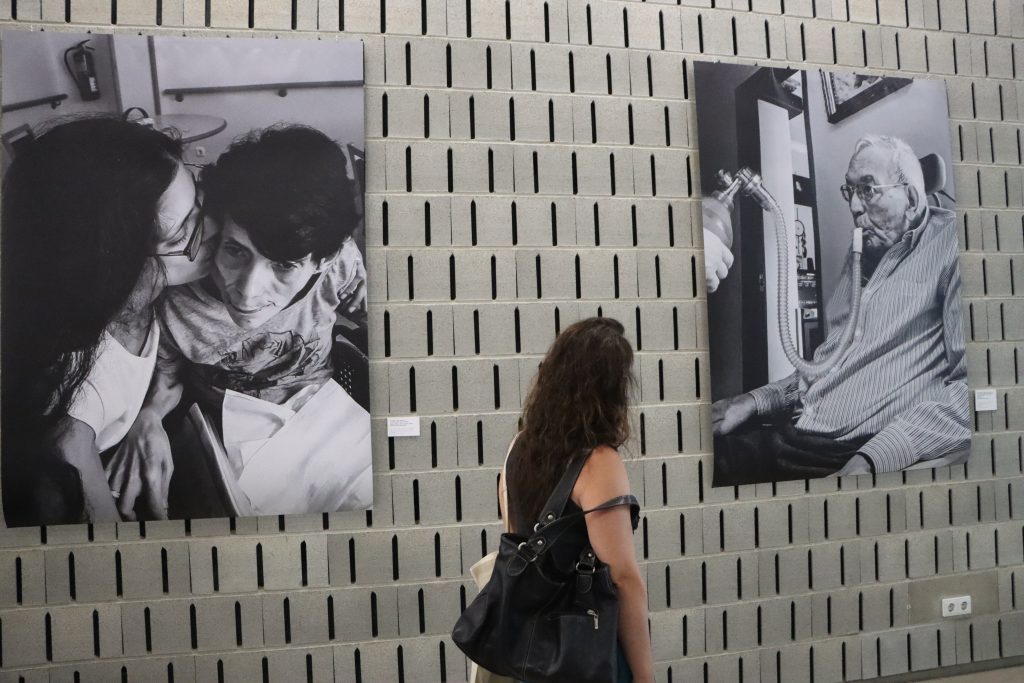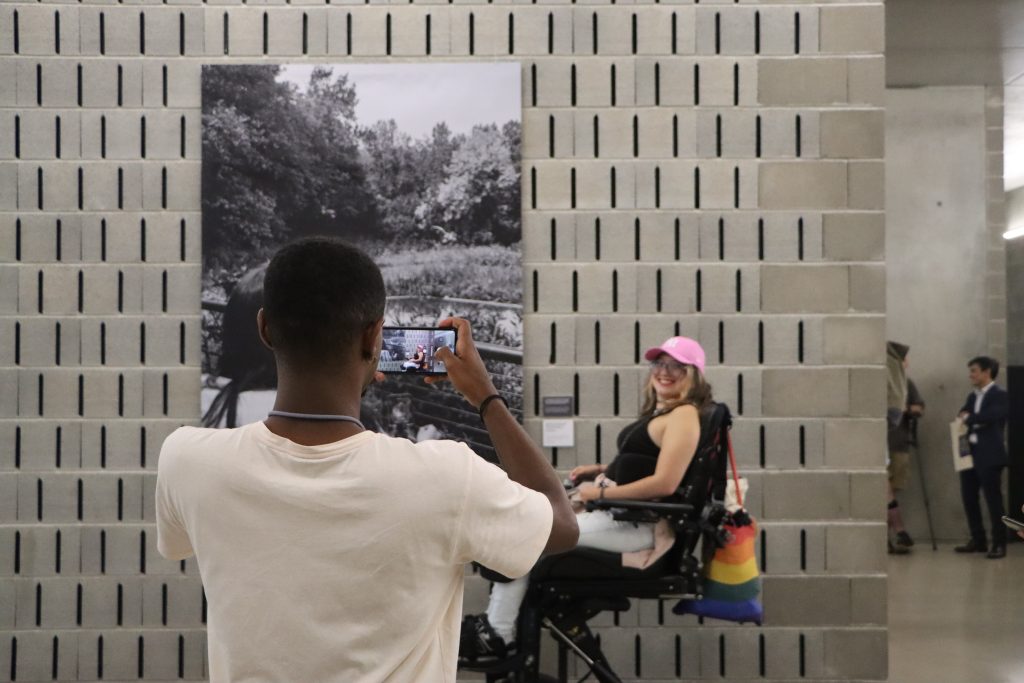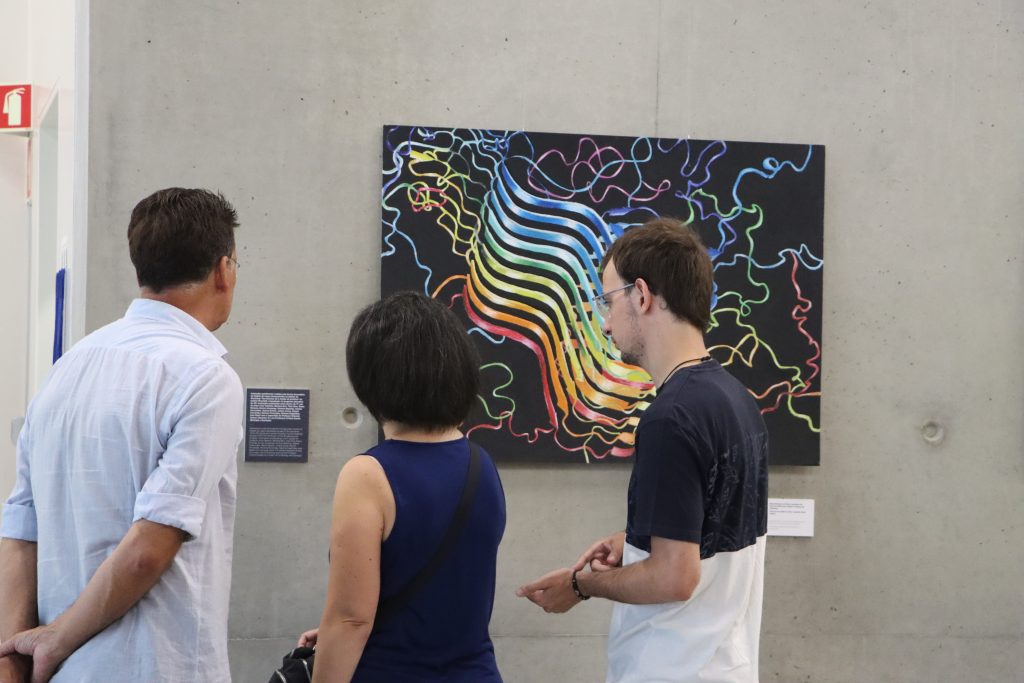The PhasAGE project is delighted to invite you to the exhibition “A Rare Look” in the main atrium of the Institute for Research and Innovation in Health – i3S (Porto). This exposition was inaugurated on September 15 and results from a long-term collaboration between the PhasAGE project, the CGPP and the i3S.
The exhibition aims to provide an in-depth insight into the vulnerability of patients affected by neurodegenerative and neuromuscular diseases. Although they have different symptoms, they all share a common cause – the deposition of proteins with altered shapes in cells. The purpose of this exhibition is to highlight how a small modification in the protein can have such a devastating impact on the lives of these patients.
In order to promote greater health literacy about the psychosocial realities of affected people and their families and the molecular mechanisms underlying the diseases, this exhibition features different perspectives from patients, secondary school students and researchers on a group of rare and incurable genetic diseases.


Diagnosing each of these diseases can sometimes be an arduous task. Some of them are considered rare due to the small number of patients affected. Others, such as Alzheimer’s disease or Parkinson’s disease, may seem more common, but the individual variations in symptoms make these conditions unique and complex to understand and treat. Every patient is a rare patient…



The term “rare” also applies to the proteins responsible for these diseases. They are rare because understanding their three-dimensional structure is a challenge, they are rare because they are versatile, assuming different conformations, which makes it particularly difficult to develop therapies capable of alleviating the severe symptoms that affect patients’ daily lives.



This exhibition aims to bring to light not only the complexity of these diseases, but also the hope that by deepening our understanding of the proteins involved, we can eventually and together find therapeutic solutions that significantly improve the quality of life of those facing these challenges.
With this event we also aim to promote greater interaction between researchers, front-line health professionals (family doctors, genetic counsellors, psychologists) and patient associations; and demonstrate the importance of basic research in the strategic plan to develop new therapies for neurodegenerative debilitating diseases.

This initiative was only possible with the participation of national patient’s associations. These associations represent the needs and perspectives of individuals living with these diseases. The following patient’s associations were involved in the organization of this event:
APAHE – Associação Portuguesa de Ataxias Hereditárias
APELA – Associação Portuguesa de Esclerose Lateral Amiotrófica (ELA)
APDH – Associação Portuguesa dos Doentes de Huntington
APDPk – Associação Portuguesa de Doentes de Parkinson
APFADA – Associação Portuguesa de Familiares e Amigos de Doentes de Alzheimer
AAADMJ – Associação Atlântica de Apoio ao Doente de Machado-Joseph
APP – Associação Portuguesa de Paramiloidose
Photos were kindly edited by the professional photographer Paulo Guerra.
We also want to acknowledge the contribution of the molecular artist Professor Doctor Francisco J. Enguita from Instituto de Medicina Molecular with amazing art pieces featuring three-dimensional protein structures.
Finally, this exhibition also bring to the stage the contribution of high-school students and professors who were involved in the workshop “From 3D structure to protein function” developed by the PhasAGE project under the i3S educational program. Their contributions highlight the connection of science-education-art and the students perspective about protein structure and function.
The exhibition “A Rare Look” can be visited until October 20, 2023 in the main atrium of i3S with free admission.
We hope to see you all there. Together we are stronger.
